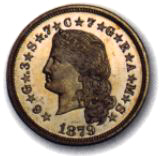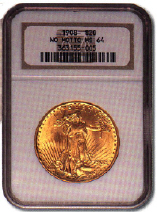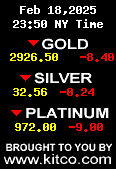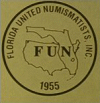Collecting Rare Coins and Currency – Page 4
Rare coins combine beauty, craftsmanship, and historical significance into a fascinating collectible. For many collectors, buying rare coins also has produced mid-to long-term. Some rare coins have increased in value tremendously, making diligent, discriminating collectors quite wealthy.
How Value is Determined
Factors that contribute to the value of a coin include the beauty of the design, a coin's historic significance, its bullion or metallic value, and the number of coins known to exist.
Surprisingly, age is not necessarily important. There are U S coins issued within the last 50 years that are worth thousands of dollars. By comparison, there are 2,000-year-old ancient Roman coins worth less than $10.
Following are some other factors that affect value:
Rarity — Rarity can be defined by the number of coins minted in a particular series, or the number of coins known to exist. Rarity is an important consideration because in general, the rarer the coin, the higher its value.
Popularity — Coins in a popular U.S. series will sell for more than coins in a series collected by only a few.
Condition or Grade — As coins enter into circulation, portions of the design are worn away and the coin becomes less desirable to a potential collector. Some coins received fewer contact marks at the mint or have b more carefully preserved since their striking. A coin in Uncirculated or Mint State is worth more than one of the same variety in a lesser state of preservation. Proof coins, which were struck with mirror-like surfaces for collectors can be very valuable in a high state of preservation.
Market — The coin market fluctuates in sometimes cyclical patterns, thereby affecting price and consumer demand.

A 1879 Four Dollar gold piece or Stella." Two types were struck in the two years this coin was issued. The flowing hair type shown above was designed by Charles E. Barber. The other, called the coiled hair Stella, was designed by George T Morgan. The gold Stella offers a unique combination of rarity, condition, and popularity.
Even for collectors who wish only to store value effectively or generate modest returns on resale, rare coins offer several advantages over other collectibles, including:
Intrinsic Value — Gold and silver coins have intrinsic value, not only as legal tender, but also by virtue of their precious metal content. Although they trade at a premium over this value, rare coin prices are not solely dependent upon dealers' maintenance of an investor market. Although coin prices can be quite volatile, collector demand is the basis of the rare coin market.
Documented Rarity — The total population of each U.S. rare coin cannot be greater than the number actually minted, which is a matter of public record. And because U.S. rare coins have been studied and traded throughout most of the twentieth century, the number of surviving coins from each issue is, in most cases, well researched and documented. Of course, the periodic appearance of a previously undocumented coin is always exciting.
Independent Grading — The authenticity and condition of rare coins is subject to independent verification. Grading services such as PCGS, NGC, ICG and ANACS are trusted by auction houses, dealers, collectors, and investors. These services have certified billions of dollars in coins over the past ten years and have backed their work with guarantees.

1908 Twenty Dollar gold coin certified by Numismatic Guarantee Corporation (NGC)








